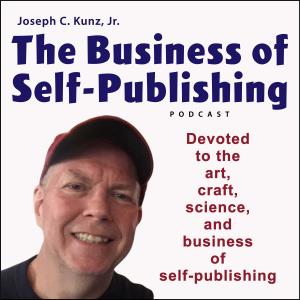The Business of Self-Publishing

4 Hot Tips to Writing a Sell Sheet’s Call-To-Action (CTA)
Synopsis
An effective call-to-action is the linchpin of a successful sell sheet. If it’s done right it can help generate greater book sales. The sell sheet’s call-to-action will play a pivotal role in making this happen.
What You Will Learn
1. You will learn four ways to create a better call-to-action that will improve your response rate.
2. You will learn how to strategically place your CTA for a better response rate.
3. You will learn how and why being aggressive and overselling can hurt your response rate.
Introduction
Any sell sheet without an effective call-to-action (CTAs) is missing out on a huge marketing opportunity. These simple yet targeted instructions to the reader are directly responsible for encouraging your audience to take the next step toward becoming a buyer of your book. Without an effective call-to-action, your sell sheet will amount to little more than an unprofitable writing exercise.
Here are some tips that I have developed from my self-publishing experiences that will help you improve the response rate of your sell sheet:
Tip #1: Place it strategically
Put your call-to-action statement in the appropriate place on your sell sheet. On a book’s sell sheet, the CTA will typically be included within the section of the publisher’s company information, and near the physical details of the book.
It might be included in a list of items, or in a separate text box, or simply lined-up on the bottom of the page. It could be a short statement, or a button, or a graphic.
Thank you to best-selling author Elizabeth Spann Craig for sharing and linking to my post.
Tip #2: Keep it short, simple, and actionable
It doesn’t need to be long or complicated. And keep it as simple as possible. Your readers don’t have time to be wasting trying to figure out what to do to get more information about your book.
On the printed version of your sell sheet, make sure that the links are short and easy to follow, and not long or complicated. On the PDF version of your sell sheet, make sure that all of the links are live and clickable.
Tip #3: Don’t just send them to your webpage
On my sell sheets, I simply tell them that my books are available from “B&T” and “Ingram”. Every book buyer at every library, university bookstore, and library, and every bookstore retailer knows exactly what this means, and within minutes can order my books.
I also list “Amazon” so that the general public can get more information and buy my books within a few minutes. I also offer an email address for more information, as well as my publisher’s website address. All very direct, simple, and effective.
Tip #4: Don’t oversell
Don’t appear too aggressive about asking for the sale. You don’t want to scare them away. They already know you want to sell your book to them. Instead, your sell sheet should be trying to convince the book buyer that you have a great product that they can benefit from.
You can accomplish this by making your sell sheet professional looking and polished, have a great book description, include specific details about your book, show a connection to major book distributors, and give an easy and simple way to get more information and buy your book.
Conclusion
An effective call-to-action is the linchpin of a successful sell sheet. If it’s done right it can help generate greater book sales. Getting the reader interested enough in your book, and then going on to find more information about your book, is the key role of the sell sheet.
The call-to-action will enable you to direct them to the best place to find more information. Whether that’s your blog, or your book’s landing page, or the book’s sales page on Amazon, it’s completely up to you. The sell sheet’s call-to-action will play a pivotal role in making this happen. Just remember to keep it short, simple, and actionable.
Questions For Us To Think About And Discuss
1. What are some of the different calls-to-action that yo...






 Visit Podcast Website
Visit Podcast Website RSS Podcast Feed
RSS Podcast Feed Subscribe
Subscribe
 Add to MyCast
Add to MyCast